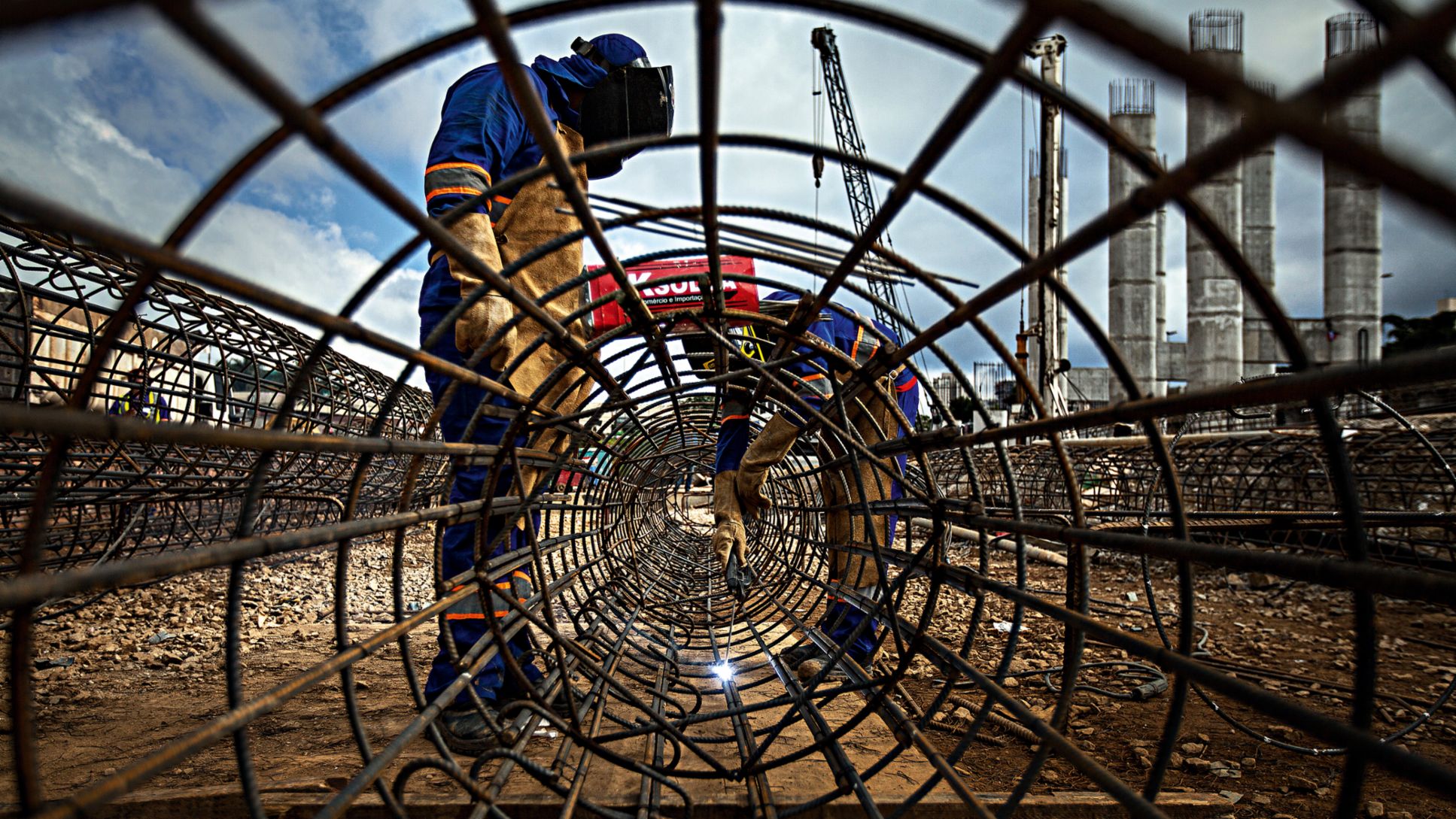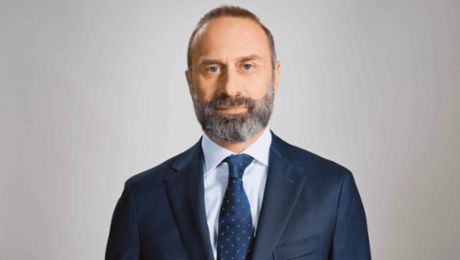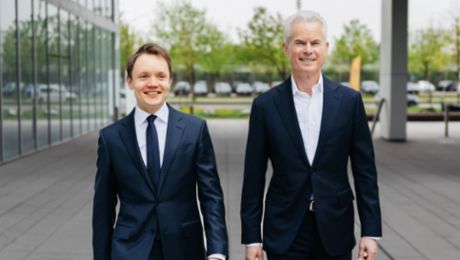São Paulo, Brazil, 6:30 in the morning—and yet another enormous traffic jam on the Octávio Frias de Oliveira Bridge, a cable-stayed structure spanning the Rio Pinheiros. This city landmark has LED lights that change colors to produce a progression of patterns at night. But at the moment the only things in motion are the helicopters flying above its 138-meter pylons. São Paulo has the highest density of helicopters in the world. People with enough money simply have themselves flown across this city of 11 million to avoid the river of metal below.
In 2014 São Paulo posted a distressing record, namely, a rush- hour traffic jam measuring 344 kilometers in length. Of course, not everyone here can afford the helicopter option. The paulistanos are therefore seeking new ways to combat congestion. Metrô-SP, for example, invests in the building of two monorail lines across the city. In comparison to conventional metro lines, these single-rail variants can be built faster, take up less space and are also considerably less costly.
Strict regulations and inspections are making the project more complex
One of the three new lines has the number 17-Ouro. Known as the “Golden Line,” it will be almost 18 kilometers long and connect Congonhas Airport with the districts Morumbi and Jabaquara, and will carry 470,000 people through the city every day. Gray concrete struts already stand in many places along the route, showing in this advanced building phase where the 14 trains made by the Malaysian Scomi rail engineering company will glide above the streets with five rail cars each at speeds of up to 80 km/h. In other parts of the city, the project is not as far along. On Rua Lacônia in the south of São Paulo, for example, where the shunting and overhaul place for the future Line 17-Ouro is being built in a tetention basin for rain water which was built to protect the region from floodings. The construction works are executed by the consortium “Monotrilho Pátio” which is formed by the two companies Andrade Gutierrez and CR Almeida. On the muddy construction site there is a lot of activity with delivery trucks everywhere, welders in protective gear at work on metal parts, and a large-scale drill rig boring away several meters underground.
“The monorail will improve the quality of life for the people of São Paulo,” says Adriana Yoshida, a construction manager at the Consórcio Monotrilho Pátio and responsible for the project. “They will be able to leave their cars at home and travel rapidly and conveniently by rail,” says the civil engineer as she strides across the rough ground in her construction boots to evaluate progress at the site. Yoshida and the consortium still have a rocky road in front of them, especially with respect to the many administrative challenges that make the project more complicated. “Everyone wants to have their say about a project of this scale,” she notes. “We are confronted with a wide range of needs—from the requirements for cyclists on the one hand to instructions from the various environmental organizations, districts, local government offices, as well as legislation. This of course increases the demands placed on our engineering expertise.”
Appreciable success using lean construction
In addition, there has to be absolute control over the costs. So to coordinate all these factors, the consortium Monotrilho Pátio is relying on lean construction—and on support from Porsche Consulting. The lean construction approach transfers four principles from the automotive industry (flow, takt, pull, and zero errors) to the construction sector in order to optimize processes. As Yoshida explains, “Porsche Consulting is helping us stabilize the construction processes, improve both quality and the ability to meet deadlines, and keep an eye on the cost calculations.” Key instruments in lean construction including takt planning and control, quality assurance, and logistics.
“Thanks to these instruments we have already seen noticeable improvements, especially in three areas,” adds Yoshida. The first area had to do with laying the foundation blocks: a process that was accomplished faster and at higher volumes on the basis of lean construction. The second area has focused on saving costs for technical equipment by using machine capacities more efficiently. As for the third area, the construction consortium now makes greater use of key indices in order to generate greater transparency and to safeguard and monitor the implementation of these measures. Renate Fuchs, Project Manager for Porsche Consulting in Brazil, reports that “we have also instituted daily meetings with the employees in order to improve planning. The construction workers are closely involved in all the measures; after all, they are the ones who are most familiar with the processes. It’s also important to qualify them in lean construction so that in the future they will be able to continue using these methods without our assistance.” In addition, a new production and logistics strategy is expected to further accelerate the construction project.
Monorail renaissance
By the way, the monorail is not a recent innovation but rather is undergoing something of a comeback. In the 1950s, Swedish multimillionaire and Electrolux founder Axel Lennart Wenner-Gren wanted to revolutionize train travel with single-rail lines. But the monorail concept did not catch on in many places at first, with the exception of a few cities such as Seattle. Walt Disney also brought the monorail to his amusement park as a tourist attraction. The system offers a number of advantages: the trains are closely integrated with the rails, which safeguards them against derailing. They can also be run automatically, and feature good aerodynamics and low energy consumption. That is why the monorail is ideal for highly populated megacities that want to combat congestion. This can already be seen in cities such as Osaka, Kuala Lumpur and Dubai. São Paulo wants to be the next such metropolis. “We are giving the city a legacy,” says Yoshida. “We will gain a lot of quality time as a result, and in the years to come we will walk past the monorail, look up at it, and be proud of what we have built.”
Info
Text first published in „Porsche Consulting - THE MAGAZINE", Issue 15
Author: Sarah Kaiser




